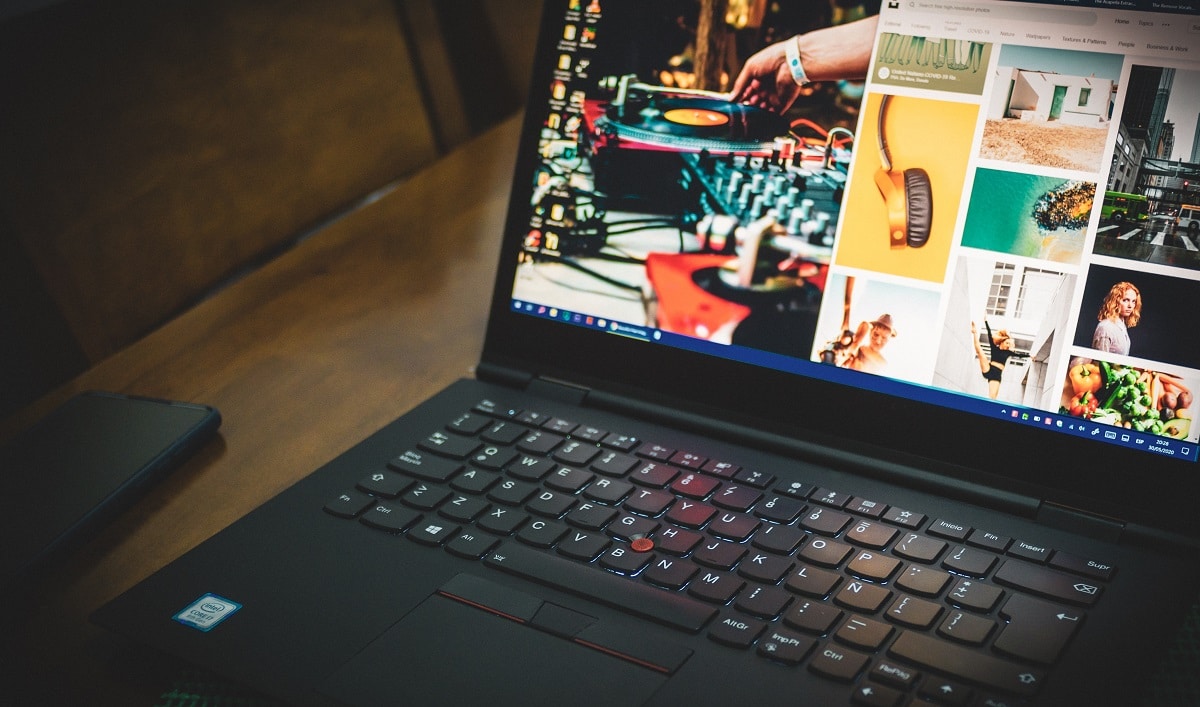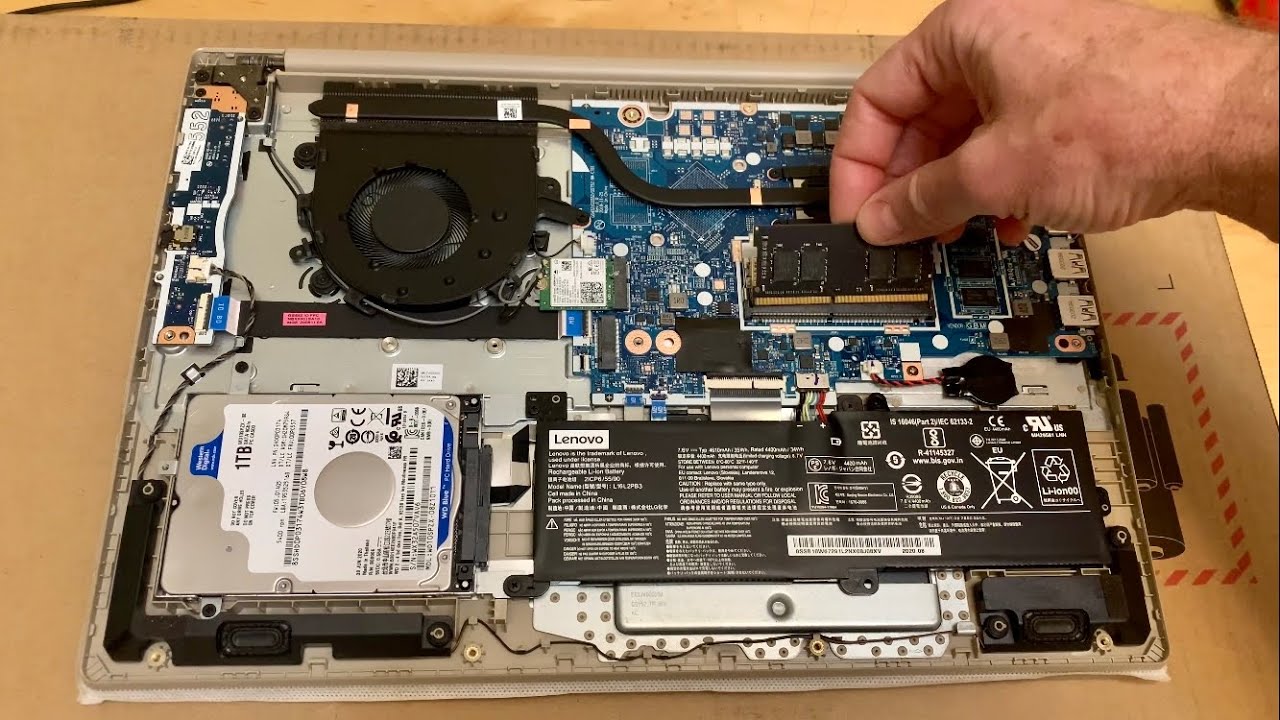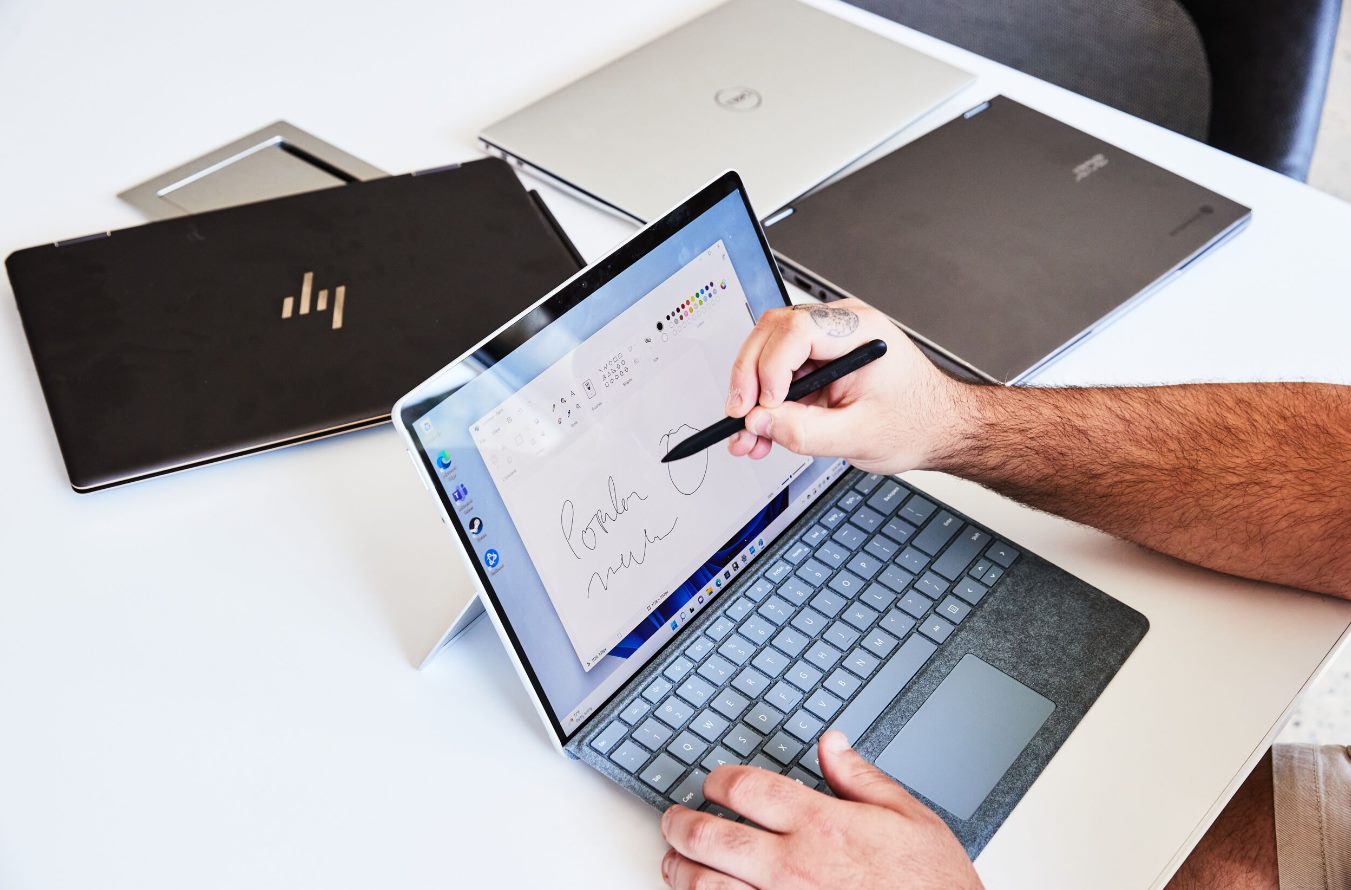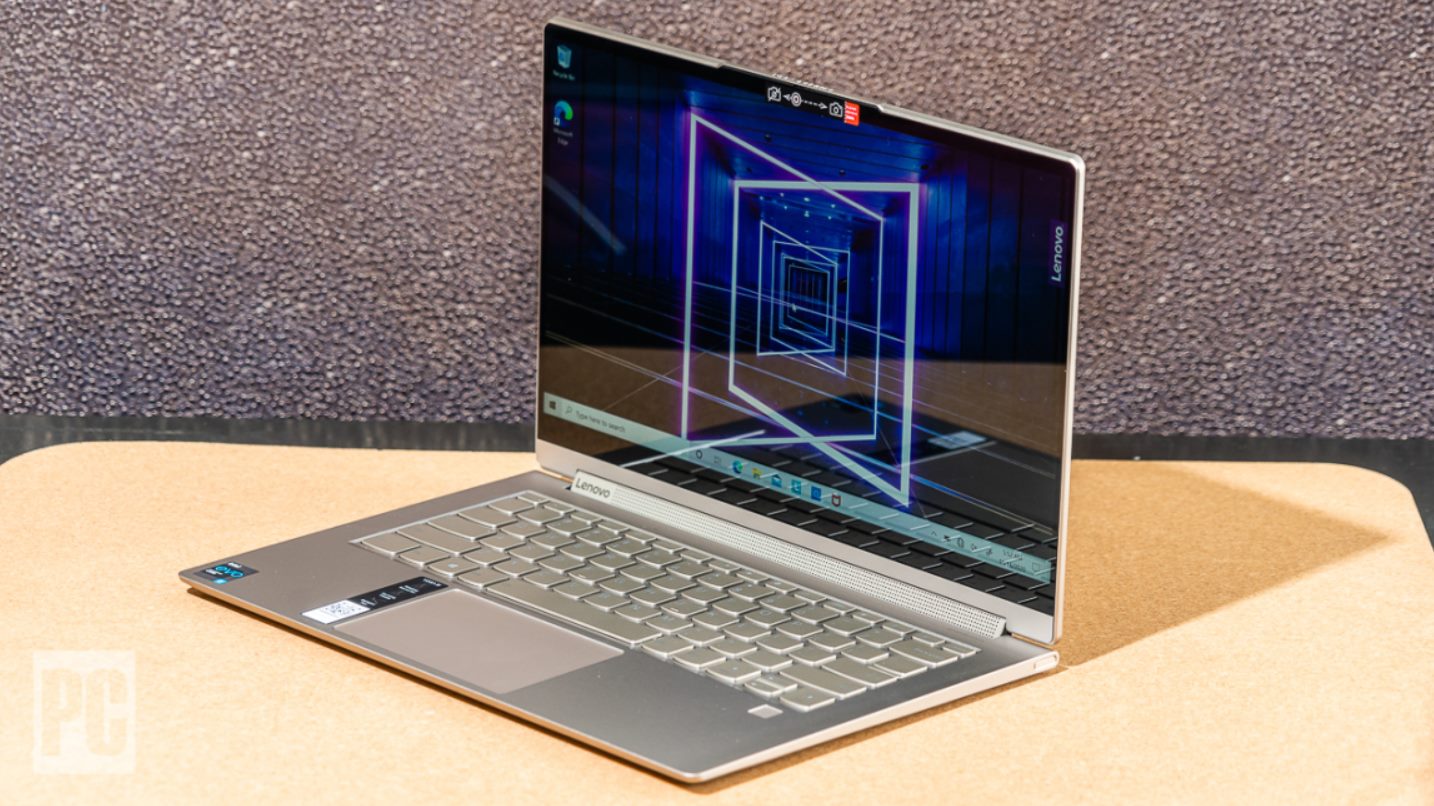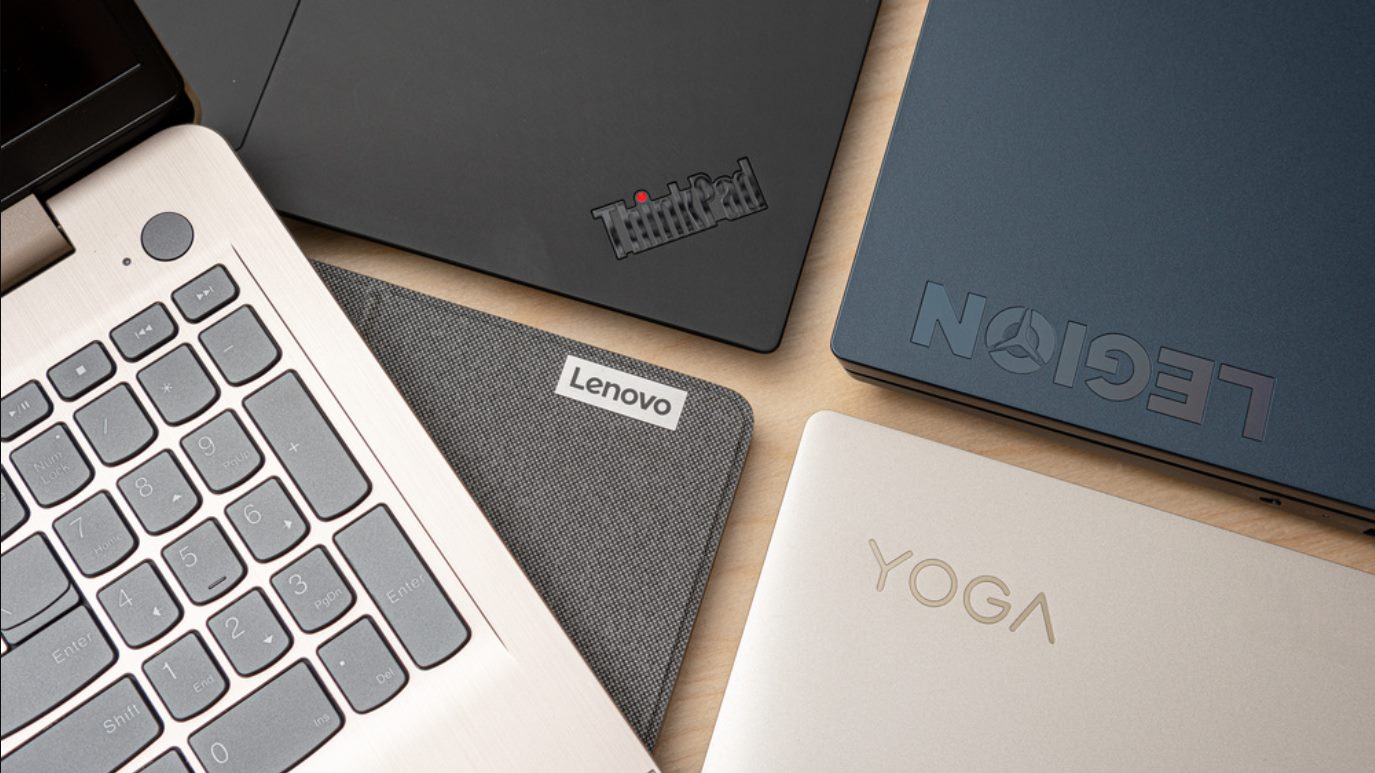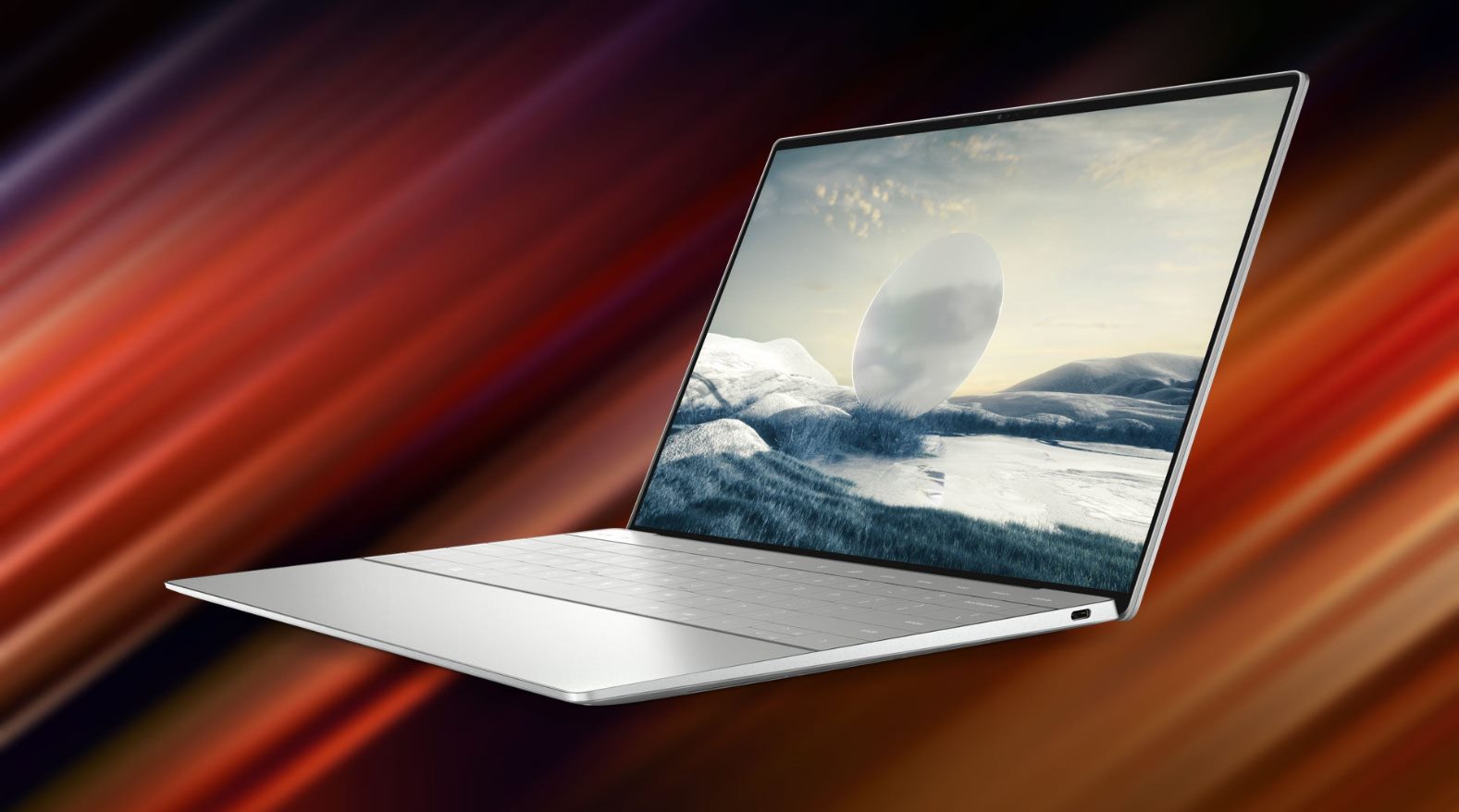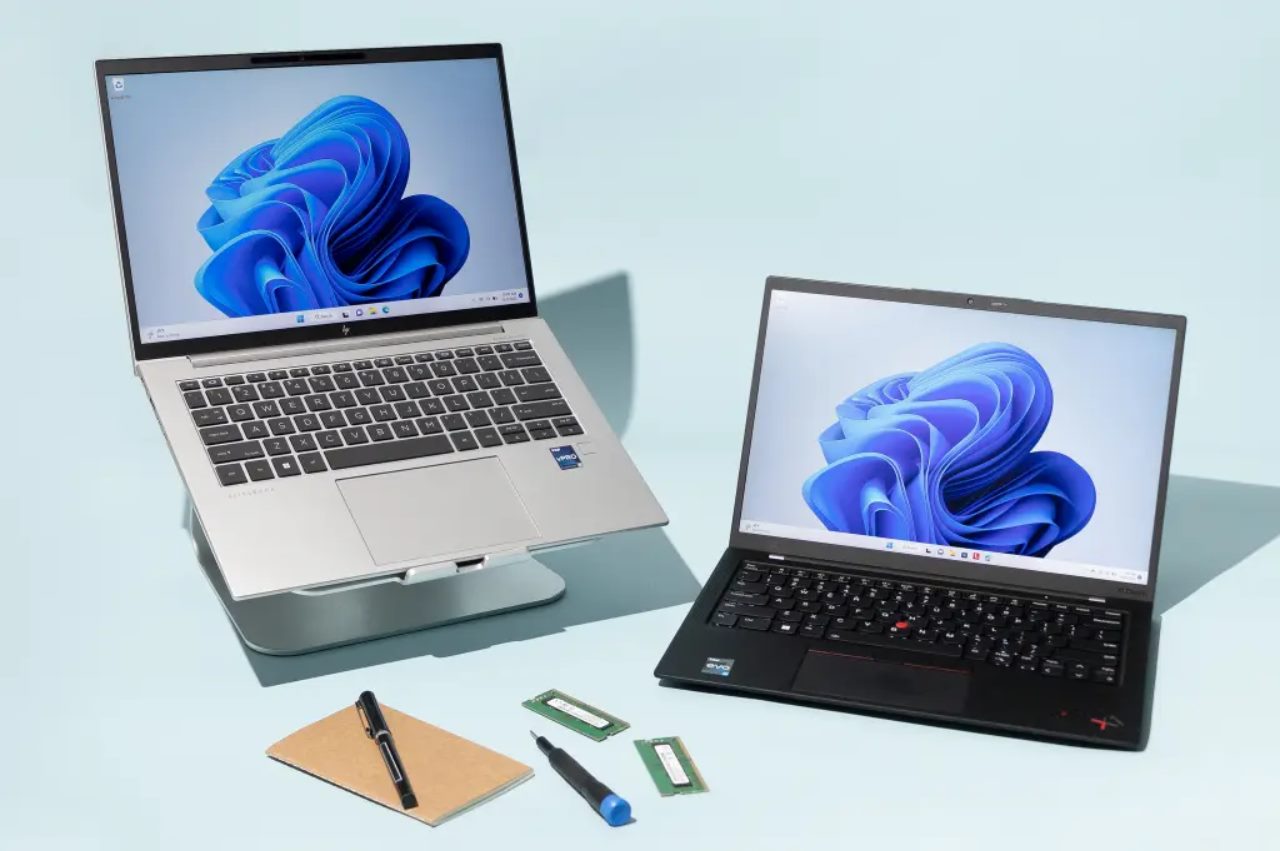Possible Reasons for Slow Startup and Performance Issues
Your Ultrabook Ideapad may experience slow startup and performance issues due to various factors. Identifying the root cause behind these issues is essential for troubleshooting and resolving them effectively. Here are some possible reasons for the sluggish performance of your Ultrabook Ideapad:
-
Insufficient RAM: A lack of Random Access Memory (RAM) can significantly affect your Ultrabook’s performance. If your device is running multiple applications or running memory-intensive tasks, the limited RAM may cause slow startup and overall sluggishness.
-
Outdated or Incompatible Drivers: Outdated or incompatible device drivers can lead to compatibility issues and negatively impact system performance. It is important to keep your Ultrabook’s drivers up to date to ensure optimal performance.
-
Malware or Virus Infections: Malicious software or viruses can consume system resources and cause your Ultrabook to become slow and unresponsive. Regularly scanning for malware and viruses and installing reputable antivirus software can help mitigate this issue.
-
Full Hard Drive: When your hard drive is nearing its maximum capacity, it can slow down system operations significantly. Removing unnecessary files and applications or upgrading to a larger capacity hard drive can alleviate this problem.
-
Power Settings: Incorrect power settings, such as being set to power-saving mode, may limit the performance of your Ultrabook. Adjusting the power settings to high performance mode or balanced mode can help improve performance.
-
Background Processes and Programs: Check for unnecessary background processes and programs that are consuming system resources. Ending or uninstalling these unnecessary processes can free up valuable resources and enhance performance.
-
Overheating: Excessive heat can cause your Ultrabook to slow down and even crash. Ensure that the device’s cooling system is working correctly, and consider using a cooling pad to prevent overheating.
-
Aging Hardware: Over time, the hardware components of your Ultrabook can wear out, leading to diminished performance. Upgrading the aging hardware, such as adding more RAM or replacing the hard drive with a solid-state drive (SSD), can breathe new life into your device.
-
Resource-Intensive Applications: Certain applications, especially those that require a lot of processing power or graphics capabilities, can slow down your Ultrabook. Closing unnecessary applications or upgrading hardware components can help improve performance.
-
BIOS and Firmware Updates: Outdated BIOS and firmware can cause compatibility issues and affect system performance. Check for updates on the manufacturer’s website and install the latest versions to optimize performance.
By identifying and addressing these potential causes, you can significantly improve the startup time and overall performance of your Ultrabook Ideapad.
Insufficient RAM
Insufficient RAM can be a leading cause of slow startup and overall sluggishness in your Ultrabook Ideapad. RAM, or Random Access Memory, plays a crucial role in providing temporary storage for data that your computer needs to access quickly. When your Ultrabook does not have enough RAM to handle the tasks you are performing, it can lead to delays in processing and responsiveness.
If your Ultrabook has limited RAM and you frequently run multiple applications simultaneously or perform memory-intensive tasks such as video editing or gaming, the lack of available RAM can become more evident. When your Ultrabook reaches maximum memory capacity, it may resort to using the hard drive as a form of virtual memory, which is significantly slower in comparison.
To address this issue, consider upgrading the RAM in your Ultrabook Ideapad. A RAM upgrade allows your computer to handle more tasks simultaneously, providing a smoother and more responsive experience. Check your Ultrabook’s specifications and determine the maximum amount of RAM it can support. Then, purchase compatible RAM modules and follow the manufacturer’s instructions to install them properly.
Upgrading RAM can have a significant impact on your Ultrabook’s performance, especially when running resource-intensive software or multitasking. It allows your computer to handle more data and applications in memory, reducing the need to access slower forms of storage like the hard drive or solid-state drive.
In addition to upgrading your RAM, it is essential to manage your multitasking habits effectively. Close unnecessary applications and processes that are consuming RAM to free up resources for your critical tasks. This will help alleviate the strain on your Ultrabook’s memory and contribute to improved performance.
Remember, insufficient RAM can manifest in slow startup times, delays in opening applications, and overall system sluggishness. By upgrading your Ultrabook’s RAM and optimizing your multitasking habits, you can overcome the limitations of insufficient memory and enjoy a faster and more responsive computing experience.
Outdated or Incompatible Drivers
Outdated or incompatible drivers can significantly impact the performance of your Ultrabook Ideapad. Drivers act as the bridge between your computer’s hardware and software, allowing them to communicate effectively. When drivers are outdated or incompatible, it can lead to stability issues, decreased performance, and even system crashes.
Regularly updating your drivers is crucial to ensure optimal performance. Manufacturers release driver updates to fix bugs, enhance compatibility with new software, and improve overall system performance. By keeping your drivers up to date, you can take advantage of these improvements and ensure that your Ultrabook functions smoothly.
To check for driver updates, you can visit the manufacturer’s website and navigate to the support or downloads section. Locate the drivers specific to your Ultrabook model and operating system. Download the latest versions and follow the provided instructions to install them correctly.
In addition to updating drivers, it is also important to ensure compatibility. If you recently installed new hardware or software on your Ultrabook, check for compatibility issues that may arise as a result. Incompatible drivers can cause conflicts, leading to performance issues and system instability.
When updating drivers, it is recommended to focus on essential components such as the graphics card, chipset, network adapter, and audio driver. These are key drivers that often have a significant impact on system performance. However, it is still beneficial to update all drivers to maximize the stability and functionality of your Ultrabook Ideapad.
In some cases, driver updates may not be available directly from the manufacturer’s website. In such instances, third-party driver update software can be useful. These programs automatically scan your system for outdated drivers and provide you with the latest versions, simplifying the update process.
Remember, outdated or incompatible drivers can cause various performance issues, including slow startup times, system freezes, and reduced overall performance. By regularly updating your drivers and ensuring compatibility, you can minimize these issues and experience smoother and more responsive computing on your Ultrabook.
Malware or Virus Infections
Malware or virus infections can have a detrimental impact on the performance of your Ultrabook Ideapad. These malicious programs can infiltrate your system, causing a range of problems such as slow startup, system crashes, and reduced overall performance.
When your Ultrabook is infected with malware or a virus, these harmful programs consume valuable system resources, leading to decreased performance. They may also initiate unauthorized processes in the background or manipulate system settings, further affecting the stability and speed of your device.
To protect your Ultrabook from malware and virus infections, it is essential to install reputable antivirus software. Antivirus programs scan your system for malicious files, detect and remove malware or viruses, and provide real-time protection against potential threats.
Ensure that your antivirus software is up to date and configured for regular scans. Regularly scanning your Ultrabook will help detect and remove any existing malware or viruses that are affecting its performance.
In addition to antivirus software, practicing safe browsing habits is crucial for preventing malware or virus infections. Be cautious when downloading files from unknown sources, visiting suspicious websites, or opening email attachments from unfamiliar senders.
Keep your operating system and other software up to date, as manufacturers often release security patches and updates to address known vulnerabilities. These updates can help protect your Ultrabook from new or emerging threats.
If you suspect that your Ultrabook is already infected, run a full system scan with your antivirus software immediately. If the scan detects any malware or viruses, follow the recommended actions to remove them effectively.
In cases where the infection is severe or difficult to remove, seeking professional help from a reputable computer technician or contacting the Ultrabook manufacturer’s support team may be necessary.
Remember, malware or virus infections can lead to a significant decrease in your Ultrabook’s performance. By installing reliable antivirus software, practicing safe browsing habits, and keeping your system up to date, you can minimize the risk of these infections and maintain optimal performance on your Ultrabook Ideapad.
Full Hard Drive
A full hard drive can be a major cause of slow startup and performance issues on your Ultrabook Ideapad. As you accumulate files, install applications, and download media, your hard drive can fill up quickly, leaving limited space for system operations.
When your hard drive is nearly full, your Ultrabook may experience delays in accessing files and data, resulting in slower overall performance. Additionally, a full hard drive can make it difficult for the operating system to allocate space for temporary files and perform necessary optimizations.
To address this issue, it is important to regularly clean up your hard drive and free up space. Start by removing unnecessary files, such as temporary files, old downloads, and duplicates. You can use built-in system utilities or third-party cleaning tools to assist you in identifying and safely deleting these files.
Uninstalling unused applications is another effective way to free up space on your hard drive. Over time, you may have accumulated programs that you no longer use or need. By uninstalling them, you can recover valuable storage space and potentially improve system performance.
In addition to removing unnecessary files and applications, consider moving large files or media to an external storage device or cloud storage service. For example, you can transfer photos, videos, or documents that are not frequently accessed to an external hard drive, USB drive, or online cloud storage.
Regularly managing your hard drive space is crucial to maintaining optimal performance. Aim to keep at least 15% to 20% of your hard drive capacity free. This allows your operating system to have enough breathing room for efficient file management, temporary storage, and performance optimizations.
By keeping your hard drive free from clutter and ensuring sufficient space, you can improve the startup time and overall performance of your Ultrabook Ideapad.
Power Settings
Incorrect power settings can negatively impact the performance of your Ultrabook Ideapad. Power settings determine how your device manages resources and controls performance when running on battery or AC power.
If your Ultrabook is set to power-saving mode, it prioritizes energy efficiency by limiting the performance of the processor and other hardware components. While this can help conserve battery life, it can also result in slower startup times and reduced overall performance.
To optimize power settings for better performance, you can adjust the power plan settings on your Ultrabook. By switching to high performance mode or balanced mode, you allow your device to operate at its maximum potential, resulting in faster startup and improved overall performance.
To modify the power plan settings, navigate through the Control Panel or Settings on your Ultrabook and locate the power options section. From there, you can select the desired power plan and customize the specific settings to suit your preferences.
It is important to note that changing power settings to high performance mode may result in reduced battery life. If you primarily use your Ultrabook on battery power, consider using the balanced mode, which offers a compromise between performance and energy efficiency.
Additionally, adjusting the power settings to allow your Ultrabook’s processor to run at its maximum clock speed can also help improve performance. This setting, known as “Maximum Processor State,” ensures that the CPU operates at its highest frequency when needed, maximizing speed and responsiveness.
By fine-tuning your Ultrabook’s power settings, you can strike the right balance between performance and energy efficiency. Remember to choose the power plan that aligns with your usage patterns and adjust the specific settings accordingly.
Optimizing power settings can significantly enhance the startup time and overall performance of your Ultrabook, ensuring a smooth and responsive computing experience.
Background Processes and Programs
Background processes and programs running on your Ultrabook Ideapad can impact its startup time and overall performance. These processes consume system resources, such as CPU and memory, even when you’re not actively using them, potentially slowing down your Ultrabook.
To improve performance, it is important to identify and manage these background processes effectively. Start by reviewing the programs that automatically start when your Ultrabook boots up. Some applications, such as antivirus software or cloud storage services, may be necessary for your computer’s security or convenience. However, other programs that launch automatically may not be essential.
You can adjust the settings to prevent unnecessary programs from starting up with your Ultrabook. Navigate to the Task Manager or System Configuration Utility on your Ultrabook, locate the Startup tab, and disable programs that you do not need to start automatically. Disabling these programs reduces the number of processes running in the background, freeing up system resources and potentially improving startup and overall performance.
In addition to managing startup programs, it is also important to close any unnecessary programs or processes that are running in the background while you are using your Ultrabook. Switching between applications or browsing multiple web pages can sometimes result in a build-up of open processes, which can slow down your device. Use the Task Manager to identify and close any resource-intensive or unnecessary processes.
It is worth noting that some background processes are essential for the proper functioning of your operating system or other critical services. Be cautious when terminating processes that you are unfamiliar with or unsure about, as it may lead to system instability or crashes.
Regularly reviewing and managing background processes and programs can help optimize the performance of your Ultrabook Ideapad. By reducing the number of unnecessary processes running in the background, you can free up system resources and provide a smoother and more responsive user experience.
Overheating
Overheating is a common issue that can lead to slower performance and potential damage to your Ultrabook Ideapad. When the internal components of your device generate excessive heat and are unable to dissipate it properly, it can cause the system to throttle performance to prevent overheating.
Several factors can contribute to overheating, including inadequate ventilation, dust buildup, and prolonged usage or running resource-intensive applications.
To prevent overheating, ensure that your Ultrabook has proper ventilation. Avoid using your device on soft surfaces, such as pillows or blankets, that can block airflow. Instead, place it on a flat, hard surface that allows air to circulate freely. Additionally, consider using a cooling pad or external fan to help dissipate heat more efficiently.
Dust accumulation within your Ultrabook can also impede proper cooling. Over time, dust can clog the air vents and hinder airflow, leading to increased internal temperatures. Regularly clean the vents and air intakes using compressed air or a soft brush to remove any dust or debris that may have accumulated.
Reducing the workload on the CPU and GPU can also help prevent overheating. Close unnecessary programs and avoid running resource-intensive tasks unless required. Similarly, moderate your usage habits by taking regular breaks and shutting down your Ultrabook when not in use.
If you frequently experience overheating issues, consider using software tools or utilities to monitor and control the temperature of your Ultrabook. These tools can help identify any potential overheating problems and allow you to adjust fan speeds or limit the CPU’s maximum temperature to maintain optimal performance.
Finally, ensure that the BIOS and firmware of your Ultrabook are up to date. Manufacturers often release updates that address known issues, including thermal management and cooling optimizations. Visit the manufacturer’s website and check for any available updates specific to your model.
By addressing the issue of overheating, you can improve the performance and longevity of your Ultrabook Ideapad. Implement proper ventilation, manage dust buildup, reduce CPU/GPU workload, and stay updated with the latest BIOS and firmware updates to prevent overheating-related performance issues.
Aging Hardware
As your Ultrabook Ideapad ages, the hardware components within it can deteriorate, leading to a decrease in performance. Over time, the processor, memory modules, and other internal components may not be able to keep up with the demands of modern software and applications.
One of the most effective ways to address aging hardware is by upgrading specific components. For example, adding more RAM to your Ultrabook can help improve multitasking capabilities and overall system performance. Upgrading to a solid-state drive (SSD) can also significantly boost startup times and enhance data access speeds compared to traditional hard drives.
Another critical component to consider upgrading is the processor. However, in most Ultrabooks, the processor is not user-upgradeable. If you feel that the aging processor is significantly impacting performance, you may need to consider purchasing a new Ultrabook with a more powerful processor.
It is important to note that upgrading hardware components requires compatibility with your Ultrabook model. Consult your manufacturer’s documentation or website to determine which upgrades are compatible with your device.
In addition to hardware upgrades, properly maintaining your Ultrabook can also help delay the effects of aging hardware. Keep your device clean and free from dust, as dust buildup can cause overheating and other performance issues. Regularly update your operating system and software to ensure compatibility and take advantage of any performance optimizations released by manufacturers.
If your Ultrabook is experiencing significant performance issues due to aging hardware and upgrades are not feasible, you may consider optimizing your usage habits. Limit running resource-intensive applications or tasks that strain your system. Close unnecessary programs and only keep essential software active.
It is essential to understand that aging hardware will eventually reach a point where it may no longer meet the requirements of newer software and updates. In such cases, purchasing a new Ultrabook with updated hardware specifications may be the best long-term solution.
By assessing and addressing the effects of aging hardware on your Ultrabook Ideapad, whether through upgrades or usage optimizations, you can improve its performance and extend its usable lifespan.
Resource-Intensive Applications
Resource-intensive applications can significantly impact the performance of your Ultrabook Ideapad. These are software programs that require substantial processing power, memory, or graphics capabilities to run smoothly. Examples of resource-intensive applications include video editing software, virtualization tools, and high-end games.
Running resource-intensive applications on a system that may not meet the required hardware specifications can lead to slow startup, laggy performance, and overall system sluggishness. When these applications consume more resources than your Ultrabook can handle, it can cause bottlenecks and compromises in performance.
If you frequently use resource-intensive applications, consider upgrading your Ultrabook’s hardware components to meet the software’s requirements. Increasing the amount of RAM, upgrading to a faster processor, or using a dedicated graphics card can help ensure that your system can handle these demanding applications more effectively.
Optimizing the settings within resource-intensive applications can also improve performance. Within the application’s preferences or settings menu, you may find options to adjust performance settings, graphics quality, or buffer sizes. Lowering these settings can help reduce the strain on your Ultrabook’s hardware and result in smoother performance.
It is crucial to close unnecessary background applications and processes when running resource-intensive software. Other running applications can compete for system resources, further impacting the performance of the resource-intensive application. Use the Task Manager to identify and close any non-essential processes that may be consuming system resources.
Regularly updating resource-intensive applications can also help improve their performance. Software developers frequently release updates to optimize performance, fix bugs, and enhance compatibility. Check for updates within the application or visit the developer’s website to ensure you have the latest version installed.
Lastly, consider managing your multitasking habits when using resource-intensive applications. Avoid running multiple demanding applications simultaneously, as this can exceed the capabilities of your Ultrabook. Close any unnecessary applications not directly related to the task at hand to free up system resources.
By understanding the demands of resource-intensive applications and ensuring your hardware is capable of handling them, optimizing application settings, closing unnecessary background processes, and keeping your software up to date, you can improve the performance of these applications on your Ultrabook Ideapad.
BIOS and Firmware Updates
Regularly updating the BIOS (Basic Input/Output System) and firmware of your Ultrabook Ideapad is vital for maintaining optimal performance and compatibility with the latest software and hardware developments. These updates provide bug fixes, security patches, and performance optimizations that can enhance your system’s overall function.
The BIOS is responsible for initializing hardware components during the system boot-up process. Firmware, on the other hand, is embedded software that controls various hardware functions and features.
Manufacturers periodically release BIOS and firmware updates to address known issues, improve stability, and enhance performance. It is recommended to visit the manufacturer’s official website and check for any available updates specific to your Ultrabook model.
Updating the BIOS and firmware typically involves downloading a specific file provided by the manufacturer and following the installation instructions carefully. It is essential to ensure that you are downloading the correct update for your exact Ultrabook model to avoid any compatibility issues.
Before proceeding with the update, it is advisable to back up your important files and create a restore point, as BIOS updates involve modifying critical system settings. This precautionary measure will allow you to revert to a previous state if any issues arise during the update process.
Updating the BIOS can improve hardware compatibility, enhance device performance, and resolve certain technical issues. Firmware updates, on the other hand, can offer new features, improved functionality, and security patches.
While BIOS updates directly impact the system’s hardware, firmware updates often target specific components such as the graphics card, network adapter, or even the firmware of an external device connected to your Ultrabook.
By keeping up with BIOS and firmware updates, you ensure that your Ultrabook Ideapad remains compatible with the latest software releases and benefits from performance improvements and bug fixes. These updates can enhance system stability, alleviate compatibility issues, and optimize overall performance.
It is important to note that BIOS and firmware updates should be performed with caution and following the manufacturer’s instructions precisely. Incorrect installation or interruption during the update process can result in system instability or even permanent hardware damage.
Make it a habit to periodically check for BIOS and firmware updates for your Ultrabook Ideapad to take advantage of the latest improvements and ensure smooth operation of your device.







